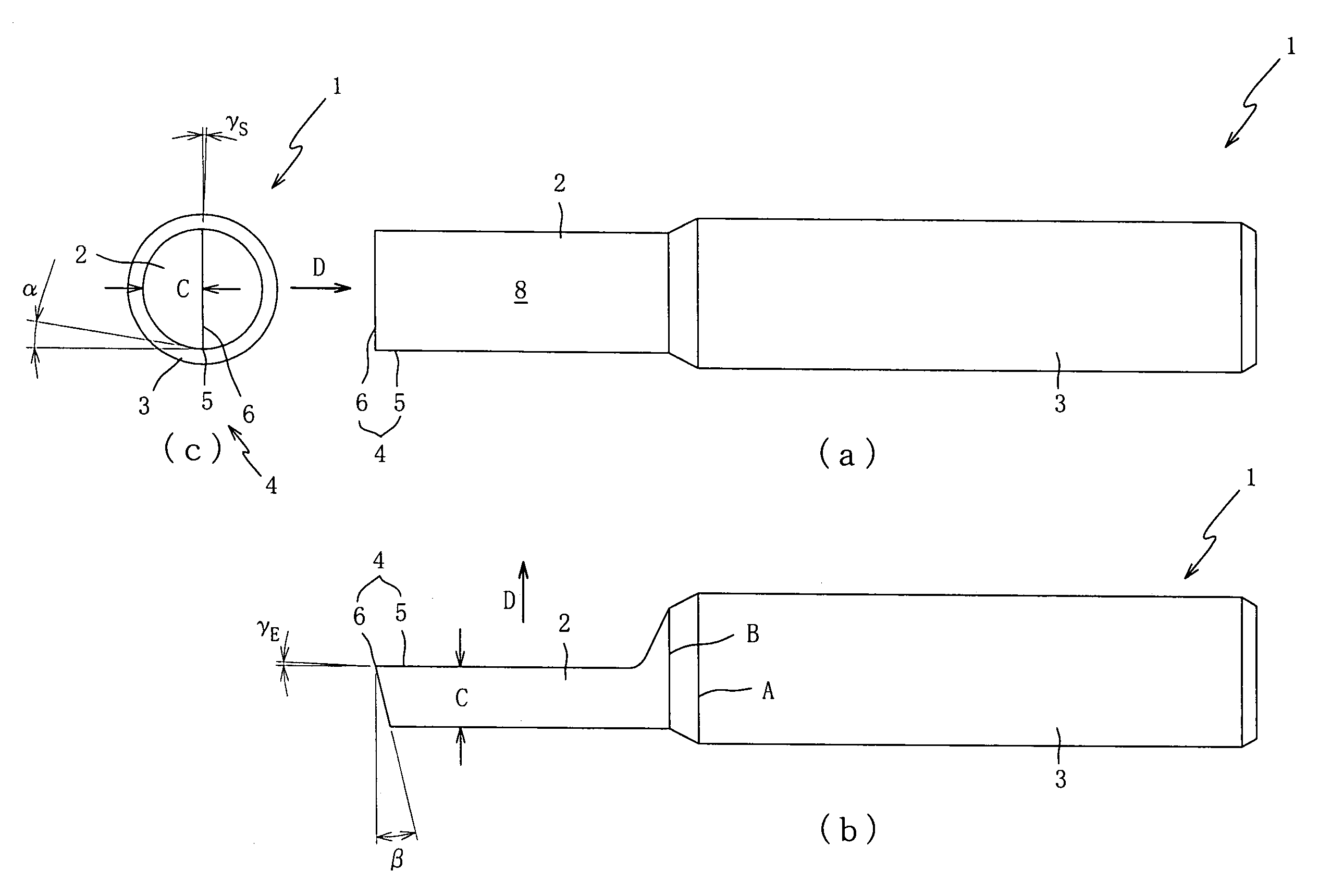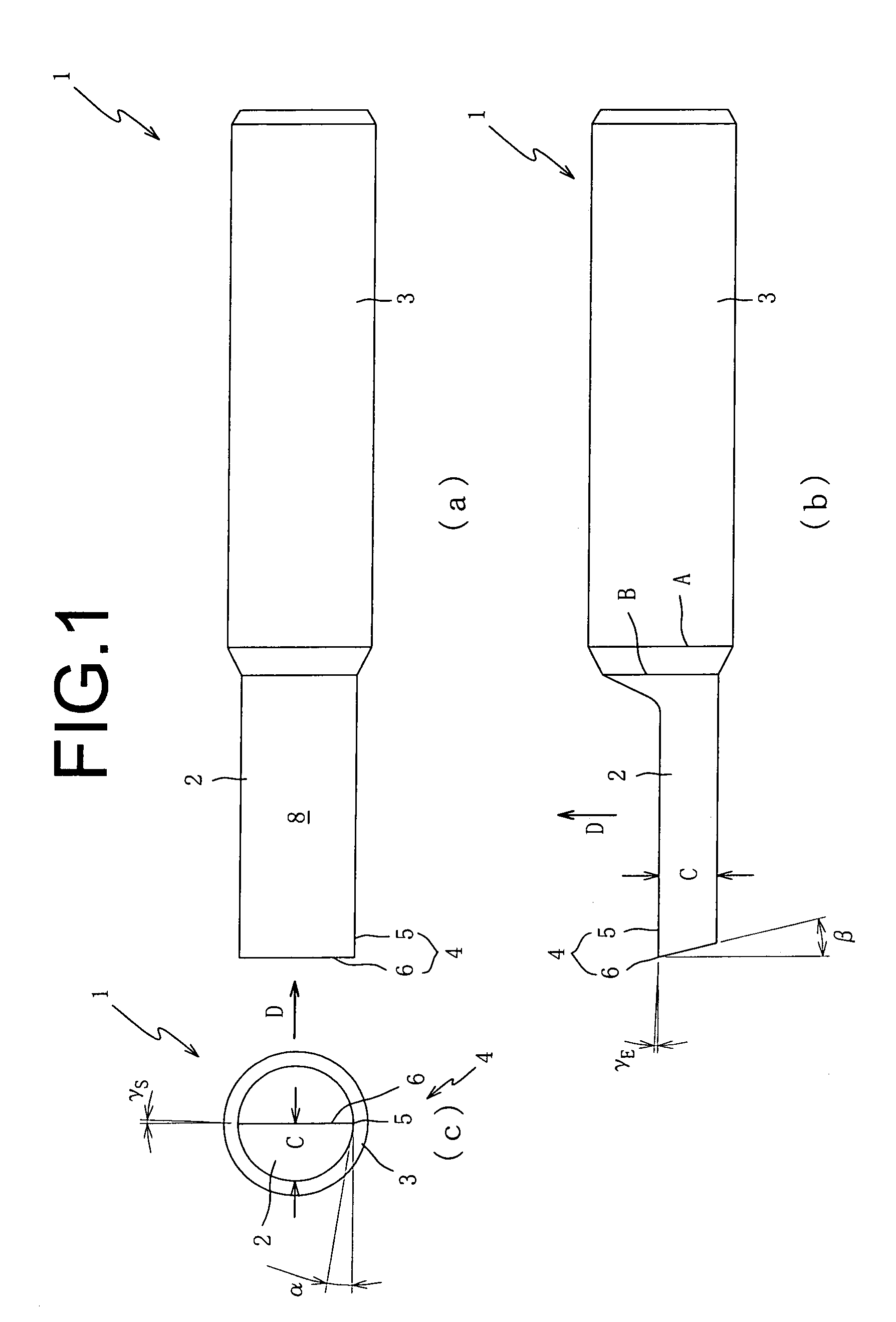Non-rotary cutting tool and process of machining scroll member by using the same
a cutting tool and scroll member technology, applied in the direction of shaping cutters, manufacturing tools, cutting inserts, etc., can solve the problems of inability to obtain a sufficiently high degree of machining accuracy, inability to machining the holder, and inability to reduce so as to facilitate the machining of the workpiece, the effect of reducing the degree of fluid tightness and high degree of accuracy
- Summary
- Abstract
- Description
- Claims
- Application Information
AI Technical Summary
Benefits of technology
Problems solved by technology
Method used
Image
Examples
Embodiment Construction
[0040]Referring first to FIG. 1, there will be described a non-rotary cutting tool 1 which is constructed according to a first embodiment of the invention. FIG. 1 is a set of three views of the non-rotary cutting tool 1, wherein its front view, side view and bottom view are given at (c), (b) and (a), respectively. The non-rotary cutting tool 1 is a so-called “gooseneck tool”, and is to be held at its end portion (right end portion as seen at (a), (b) of FIG. 1) by a suitable tool holder (not shown) so that the cutting tool 1 is fixed to a spindle of a machine tool (not shown) such as a machining center through the suitable tool holder. This non-rotary cutting tool 1 is advantageously used, for example, in a finishing step of a process of machining a scroll compressor, as shown in FIG. 7.
[0041]The non-rotary cutting tool 1 is provided by a substrate (single piece) formed of a cemented carbide which is made from, for example, tungsten carbide (WC) in a powder-metallurgy process includ...
PUM
| Property | Measurement | Unit |
|---|---|---|
| rake angle | aaaaa | aaaaa |
| surface roughness Rz | aaaaa | aaaaa |
| radius | aaaaa | aaaaa |
Abstract
Description
Claims
Application Information
 Login to View More
Login to View More - R&D
- Intellectual Property
- Life Sciences
- Materials
- Tech Scout
- Unparalleled Data Quality
- Higher Quality Content
- 60% Fewer Hallucinations
Browse by: Latest US Patents, China's latest patents, Technical Efficacy Thesaurus, Application Domain, Technology Topic, Popular Technical Reports.
© 2025 PatSnap. All rights reserved.Legal|Privacy policy|Modern Slavery Act Transparency Statement|Sitemap|About US| Contact US: help@patsnap.com



